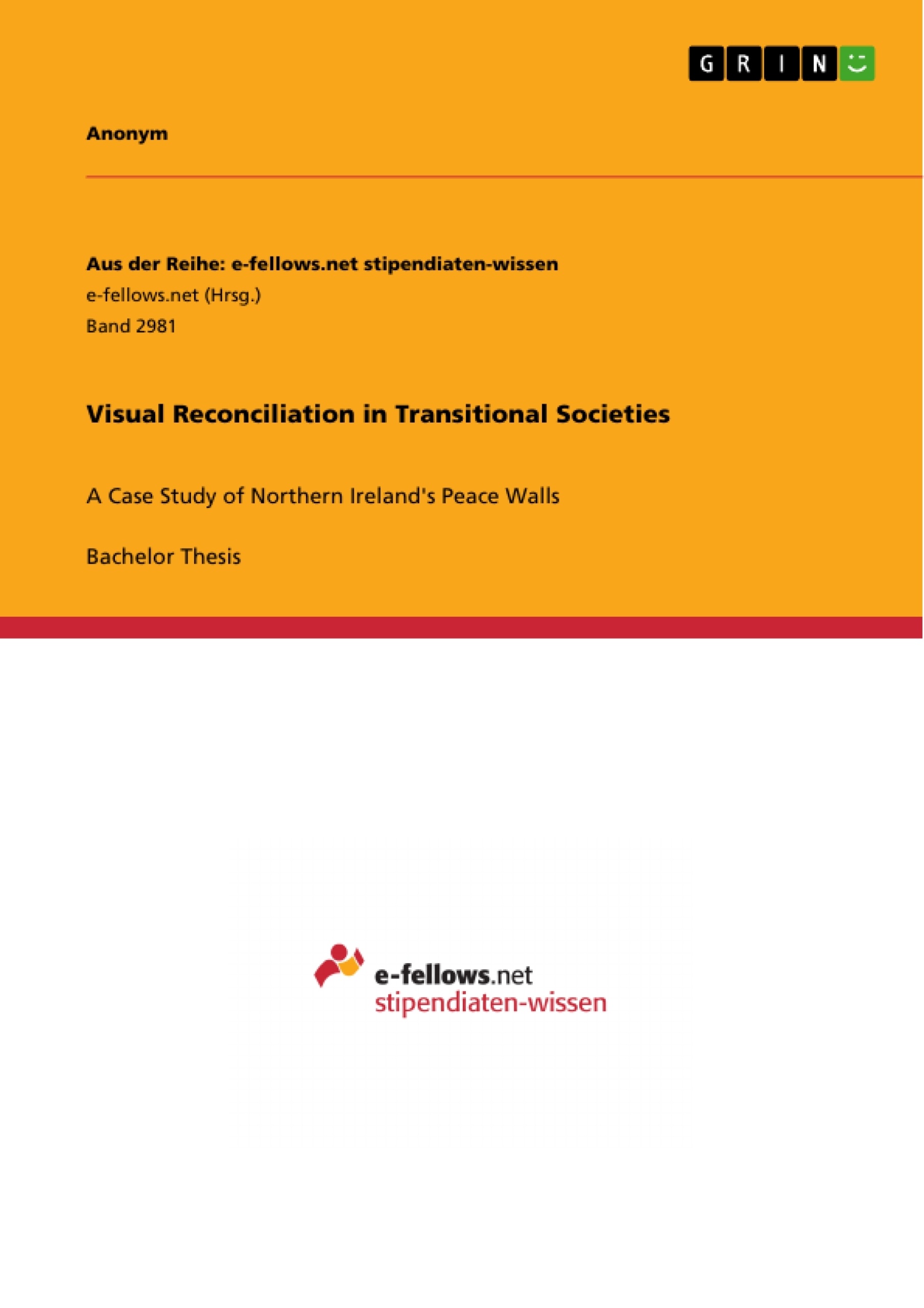This paper underlines the importance of an incorporation of visual methodology into the study of transitional justice.
It makes an argument for that through the assessment of visual displays on the peace walls as commemoration space in Northern Ireland, relating the reflections of the local transitional justice process to reconciliation in the country.
Transitional justice uses a combination of judicial and non-judicial means to achieve its goal. Typically, there are five tools that can be used in a transitional justice process. They include institutional reform, truth, reparations, amnesties or prosecutions and reconciliation. While all can be important, tools are usually tailored individually for different transitional societies.
While this paper underlines the importance of an incorporation of visual methodology into the study of transitional justice and makes an argument for that through the assessment of the peace walls as commemoration space in Northern Ireland, it can only be a starting point. Studying reconciliation through the visual analysis of space in transitional societies can be an important tool for transitional justice and this paper makes an argument for more integration of it into the field.
Inhaltsverzeichnis (Table of Contents)
- Abstract
- Introduction
- Literature Review
- Analysis of the Peace Walls as Commemoration Space in Northern Ireland
- The Transitional Justice Process in Northern Ireland
- Analysis of the Peace Walls as Commemoration Space in Northern Ireland: Methodology
- Analysis of the Peace Walls as Commemoration Space in Northern Ireland: Pictures
- Picture One: “You are now in loyalist Tiger’s Bay”, 1994 by Freddie Quinn
- Picture Two: “Peace line by Lanark”, October 1998, Cathy Gormley
- Picture Three: “Peace line”, May 2000, Martin Melaugh
- Picture Four: “Streets Apart”, 2002, Frankie Quinn
- Picture Five: “Towards 2023”, 2010, Frankie Quinn
- Analysis of the Peace Walls as Commemoration Space in Northern Ireland: Summary
- Conclusion
Zielsetzung und Themenschwerpunkte (Objectives and Key Themes)
This paper aims to demonstrate the importance of incorporating visual methodology into the study of transitional justice. It does so by analyzing visual displays on the peace walls in Northern Ireland, relating these visual reflections to the local transitional justice process and its impact on reconciliation in the country.- The role of visual displays in reflecting social memory and reconciliation in post-conflict societies
- The impact of transitional justice mechanisms on social memory and visual expressions
- The significance of space and place in shaping social identity and political expression
- The use of semiological analysis to interpret visual displays and their underlying meanings
- The potential of visual methodology as a tool for evaluating the effectiveness of transitional justice processes
Zusammenfassung der Kapitel (Chapter Summaries)
- The paper begins with an introduction that sets out the research question and the importance of visual methodology in the field of transitional justice. It outlines the specific focus on the peace walls in Northern Ireland and the time frame of the analysis.
- The literature review delves into the importance of social memory and visual representation in shaping political landscapes, particularly in post-conflict societies. It highlights the lack of visual analysis in existing transitional justice research and argues for its inclusion.
- The chapter focusing on the peace walls as commemoration spaces examines the Northern Irish conflict and its impact on social division and reconciliation. It outlines the key events and mechanisms of the transitional justice process, setting the stage for the visual analysis.
- The methodology section explains the selection of pictures from the CAIN archive, their representativeness of the peace process, and the semiological approach used to analyze the visual displays.
- The analysis of individual pictures provides a detailed semiotic interpretation of each image, linking visual cues to specific events in the transitional justice process and their potential implications for social memory and reconciliation.
Schlüsselwörter (Keywords)
This paper explores the intersection of visual culture, transitional justice, and social memory in Northern Ireland. Key terms include peace walls, commemoration space, visual methodology, semiological analysis, reconciliation, social memory, ethno-nationalist conflict, Northern Ireland, transitional justice, and critical geopolitics. These keywords encompass the central themes and concepts of the research, highlighting the importance of visual displays in understanding the complexities of post-conflict societies and the ongoing process of reconciliation.- Quote paper
- Anonym (Author), 2018, Visual Reconciliation in Transitional Societies, Munich, GRIN Verlag, https://www.grin.com/document/448567



